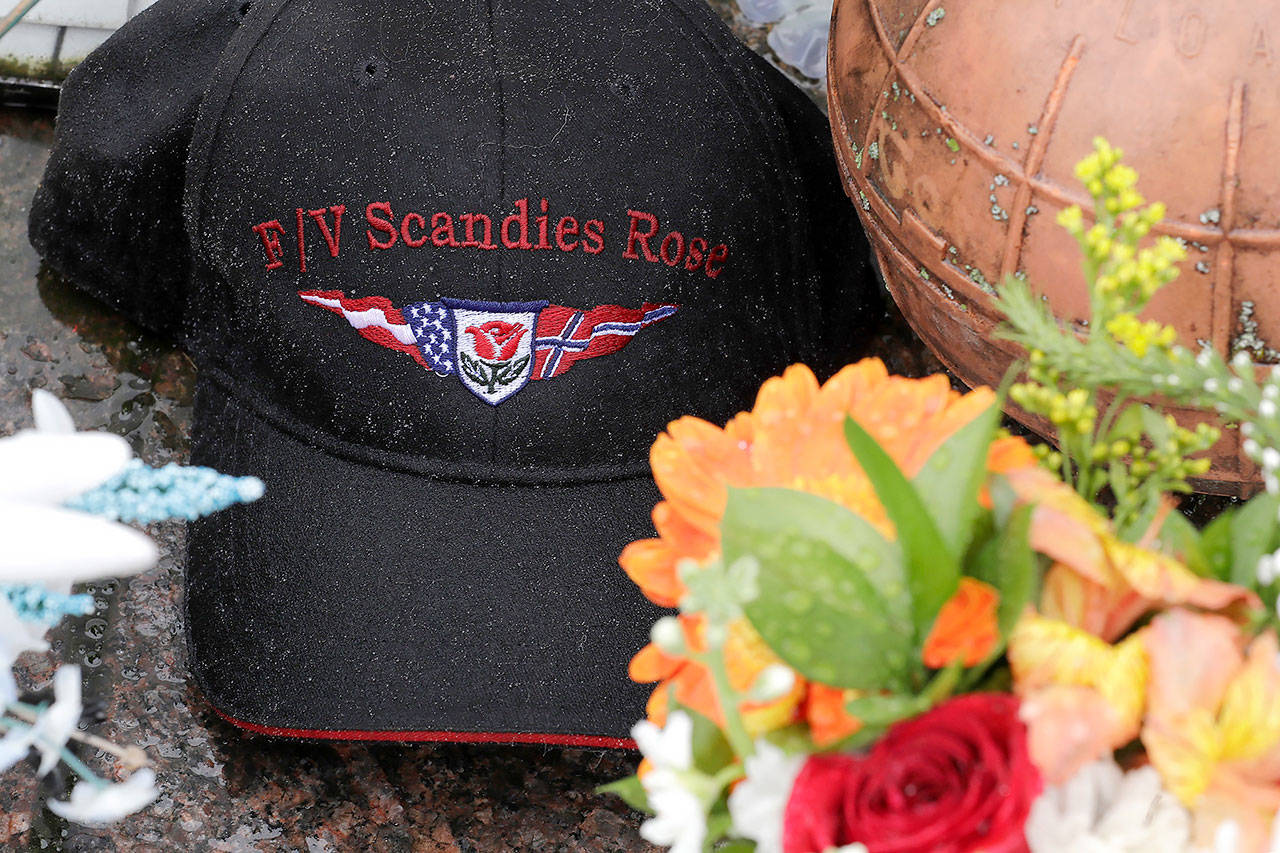By Hal Bernton / The Seattle Times
Through the buzz of airwave static, a voice can be heard giving coordinates in the Gulf of Alaska. Then four chilling words: “We are rolling over.”
This nighttime Dec. 31, 2019, mayday transmission from the Scandies Rose, a Washington-managed crab boat, was played Monday morning as the Coast Guard launched two weeks of public hearings to investigate the sinking that took the lives of five of the seven crew.
The Coast Guard Marine Board of Investigation is the highest level of inquiry into accidents, and the schedule includes testimony from the vessel’s co-owner, two survivors, former crew, naval architects and people involved in repairs. It will result in a report that is expected to point to a probable cause of the sinking, as well as come up with recommendations on how to improve safety in the Alaska fleet that joins in winter harvests for snow and king crab.
The public hearings at the Edmonds Center for the Arts in the days ahead also will include testimony from the two survivors of the Scandies Rose — Dean Gribble Jr., of Edmonds, and Jon Lawler, of Anchorage. They have already given harrowing accounts to reporters of scrambling to the wheelhouse, donning survival suits and preparing to abandon the rapidly sinking and severely listing vessel around 10 p.m. They said a big wave knocked them off the boat.
“I was just floating alone in the dark for a half an hour, getting tossed in those waves … You are so small out there,” Gribble said in an interview last fall with The Seattle Times.
Cmdr. Gregory Callaghan, the board chair, in an earlier interview said the investigation is exploring a range of issues that could have contributed to the sinking while the crew sought to journey from Kodiak in south-central Alaska to Bering Sea fishing grounds off the Aleutian Islands.
The weather forecasts that night called for heavy freezing spray — a condition that causes ice to build up on crab pots and hulls, and can make a boat more likely to capsize. The investigation is examining the role that ice might have played in the sinking. The board is also looking into Coast Guard regulations that guide the development of reports by naval architects that detail how a boat should be loaded.
In testimony Monday, Dan Mattsen, a co-owner of the Scandies Rose, said that the regulations assume a much lower buildup of ice than often occurs in the winter waters off Alaska. “They are totally unrealistic,” Mattsen said.
The investigators will also look for mechanical or other problems the vessel may have experienced, according to Callaghan. One issue scrutinized during Monday’s hearing involved leaks in the area of a discard chute on the vessel. The leaks caused trouble in 2018 that prompted a patch. There was another repair, involving contract welders, during a 2019 Seattle stopover. But the leaks were still not fixed as the crew in Kodiak prepared for the 2020 season.
“I thought this has been repaired in shipyard,” texted the deceased skipper, Gary Cobban Jr., in a message displayed during the hearing.
Cobban Jr., a Kodiak, Alaska, resident and a part-owner of the boat, then hired a maritime welding company in Kodiak to do additional repairs, according to Mattsen, the first witness to testify in the hearing.
Mattsen got news of the sinking of the Scandies Rose on New Year’s Day 2020 while he was aboard another crab boat that he had just brought to port in Dutch Harbor, Alaska. At 5 a.m. that morning, he was woken by his phone. It had “blown up” with others relaying news of the tragedy.
“It was almost incomprehensible to me,” Mattsen testified Monday.
After bobbing about in survival suits, both Lawler and Gribble eventually made it to a life raft. But their suits and the raft had no locator beacons. An emergency light in the raft eventually went out, and they feared they would never be found.
Their ordeal ended sometime before dawn, when a swimmer from a Coast Guard helicopter reached them. The challenges they faced after they went overboard also are expected to receive scrutiny from investigators.
The Alaskan fall and winter crab harvests have a perilous history.
During the 1990s, more than 70 crab-boat crew members died, according to the National Institute of Occupational Safety and Health. Safety was improved by increased Coast Guard oversight of loading heavy steel-framed crab pots, and a change in the harvest system, which assures a boat a harvest share and eases the pressure on crews to work through bad weather.
From 2006 to through 2016, no crab boat went down with loss of life.
Then in February 2017, the Seattle-based Destination sank, killing all six crew, and less than two years later, the Scandies Rose went down.
In November, owners of the Scandies Rose reached a settlement of more than $9 million with the two surviving crew and families of four of the men who died.
The four men whose families were involved in the settlement were:
• David Cobban, 30, Gary Cobban Jr.’s son, who also lived in Kodiak;
• Brock Rainey, 47, of Kellogg, Idaho;
• Art Ganacias, 50, the boat’s engineer who had lived in Sand Point, Alaska, but also many years in the Puget Sound region;
• Seth “Sorin” Rousseau-Gano, 31, who lived in the Silverdale area and whose earlier fishing career included Dungeness crabbing off Washington.
Talk to us
> Give us your news tips.
> Send us a letter to the editor.
> More Herald contact information.

























